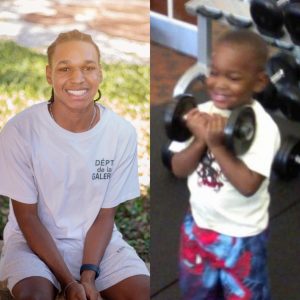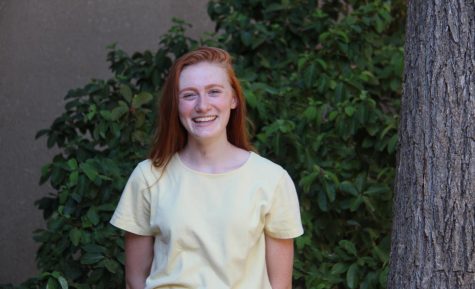A diet guide for healthier living
Six diets that provide different needs for different people

Healthy breakfast fruit bowl with nuts, fruits and grains.
March 28, 2019
Finding the right diet is always complicated and stressful, but with new diets being introduced all the time it’s becoming easier to find one specifically for you.
A gluten free diet is a diet that excludes the protein gluten. Gluten can typically be found in foods containing wheat. On a gluten free you should avoid majority of breads, oats, condiments, spices and seasonings. There are still many foods that can be eaten on a gluten free diet such as fruits, vegetables, dairy, eggs and some meats.
This diet is common for people with celiac disease. This disease causes the immune system to damage the small intestine whenever gluten is eaten. According to Dr. Shatnawei, studies have shown there is no evidence going gluten free does anything for regular people. Also, gluten is not a bad thing when eaten responsibly. It is found in foods rich with vitamins and fiber which are beneficial. If you are gluten intolerant a gluten free diet is a lifetime commitment, but if you are not according to Mayo Clinic they recommend a week trial of a gluten free diet and if you have a reaction to stop the diet immediately.
A paleolithic (Paleo) diet is based on foods eaten by early humans. Consisting mainly of meats, fruits and vegetables, excluding dairy and grain products. Typically people tend to go on the paleo diet to lose weight or maintain a healthy weight. According to Mayo Clinic the diet’s purpose is to return to the diet of early humans when food wasn’t as manufactured and processed, but instead fresh and natural.
According to PaleoPlan, people have gotten various results from going on the Paleo diet. Some people can only do it short term and then they go back to their regular eating plans, while others can stay on it for longer periods of time before going back to a somewhat regular diet.
A ketogenic (Keto) diet is a low-carb, high-fat diet. This diet was created by Dr. Gianfranco Cappello, he says that the diet is healthy and is especially helpful for obese people trying to lose weight. Typically people go on this diet to lose weight fast and get down to a desired weight. Rudy Mawer, a sports nutritionist, does state however that the diet does not improve athletic performance it just gets weight down at a fast pace. While on the diet people must abstain from eating many fruits, starch based foods, grain based foods and candy. People on the diet typically eat meats, fish, high fat sauces, vegetables and other high fat based foods. According to Healthline, this diet is for short term only. If the diet is continued for too long you could go into ketosis which may result in ketoacidosis which is a complication of type 1 diabetes mellitus and requires immediate hospital treatment. According to Amanda MacMillan a writer on Health if you start experiencing flu like symptoms, decrease in athletic performance, weight regain and decrease in muscle mass stop the diet immediately and go back to a regular diet.
The Atkins diet is a high protein and fat, low carb diet typically prescribed for weight loss. According to Mayo Clinic this diet is to change eating habits and keep weight gain down.
According to Healthline this is a four phase diet. Phase one is considered the induction period. You start with under 20 carbs a day for two weeks. You should eat high fat, high protein and low carb vegetables. Phase two is considered the balancing phase. You should slowly add nuts, low carb vegetables and low amounts of fruit back into your diet. Phase three is called the fine tuning stage. During this stage you should be close to your weight goal and you should begin to add more carbs to your diet until weight loss slows back down. Finally, phase four is the maintenance stage. You can eat as many healthy carbs as you body can handle without going back to your original weight or weight gain.
The Whole30 diet program is a diet plan designed to help you put an end to unhealthy food habits and cravings, restore a healthy metabolism, heal your digestive tract and balance your immune system. This diet completely strips out foods such as sugar, grains, dairy and legumes. According to Whole30 this diet changes people’s lives. They claim it changes the way you think about food, it changes your taste and gets rid of your unhealthy food cravings and habits. They also claim that more than 95% of participants lose weight and improve their body composition, without counting or restricting calories.
Foods you are encouraged to eat on the diet are vegetables, fruits, unprocessed meats, seafood, eggs and nuts.
The Daniel plan is a 52 week diet plan written by Rick Warren, Dr. Daniel Amen, and Dr. Mark Hyman who are all licensed doctors. The Daniel plan was inspired by the chapter of Daniel in the Bible. This diet is to help you adapt to a new and improved healthy lifestyle. Foods you can eat on the Daniel plan are vegetables, fruits, foods containing Omega 3 fats and fiber, while drinking green tea, skim milk and water.
Foods to avoid are sodas, juices, high fructose corn syrup, hydrogenated oils and sugar.
The Daniel Plan encourages you maintain your physical and mental health by working out, enhancing flexibility and group exercises. This is a religious-based diet and follows the teachings of the Bible and God.











